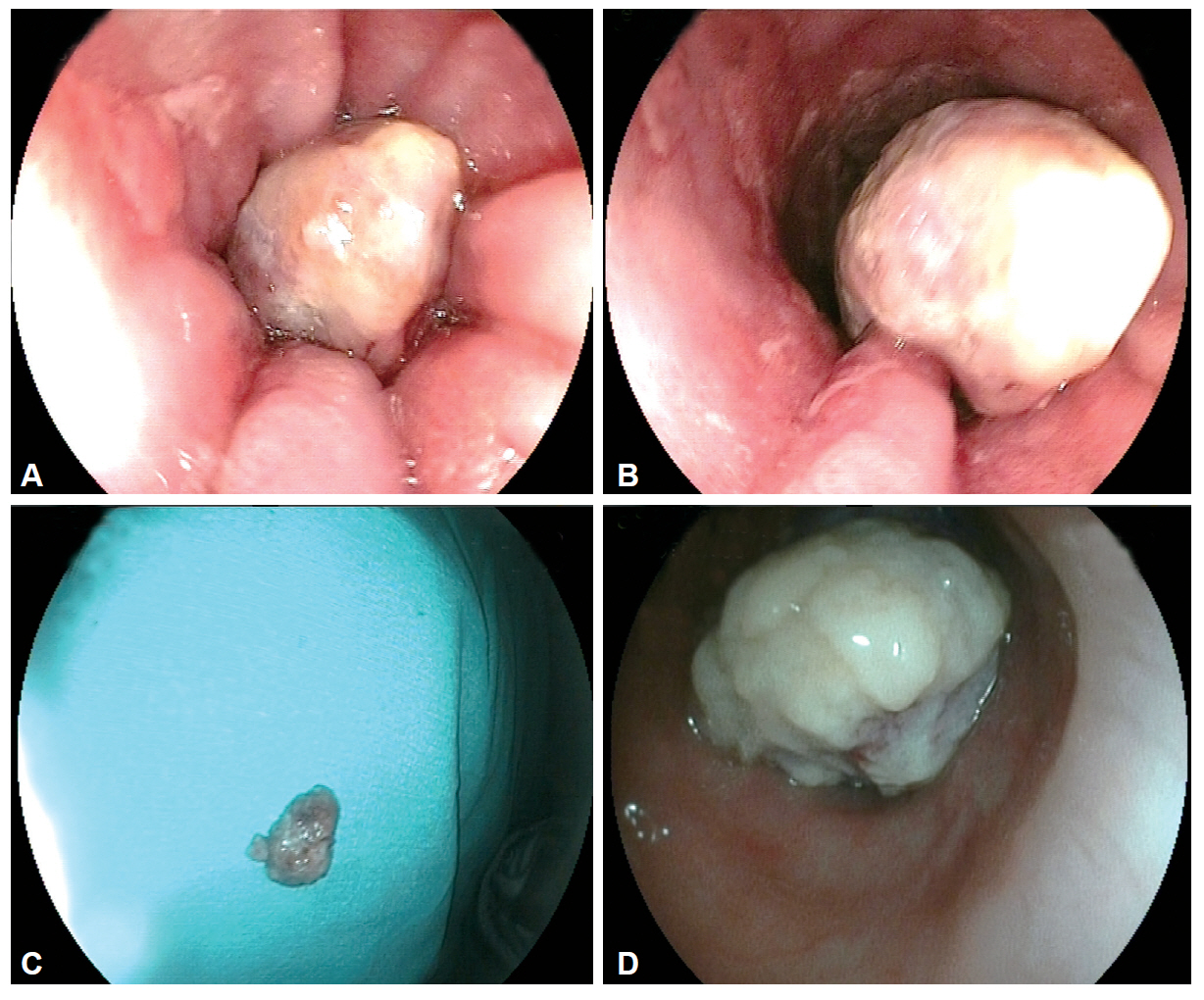Clin Endosc.
2015 Nov;48(6):549-552. 10.5946/ce.2015.48.6.549.
Esophageal Lymphoepithelioma-Like Carcinoma with Unique Daisy-Like Appearance
- Affiliations
-
- 1Department of Gastroenterology, Yuzuncu Yil University Medical Faculty, Van, Turkey. drsehmusolmez@gmail.com
- 2Department of Medical Oncology, Yuzuncu Yil University Medical Faculty, Van, Turkey.
- 3Department of Radiology, Yuzuncu Yil University Medical Faculty, Van, Turkey.
- 4Department of Surgery, Yuzuncu Yil University Medical Faculty, Van, Turkey.
- 5Department of Pathology, Yuzuncu Yil University Medical Faculty, Van, Turkey.
- KMID: 2380414
- DOI: http://doi.org/10.5946/ce.2015.48.6.549
Abstract
- Due to differences in prognosis and management, it is important to subclassify esophageal carcinoma. Esophageal lymphoepithelioma-like carcinoma (LELC) is extremely rare, with only a few cases reported to date. Review of the literature revealed case reports describing lesions with similar histology. We present a 69-year-old man with a giant pedunculated-polypoid lesion of the esophagus shrinking the lumen. Endoscopic excision of the tumor was performed and final histopathological diagnosis was confirmed to be LELC. In contrast to a previous case with a more aggressive course and a recurrent lesion, our patient died of his disease within 8 months of diagnosis. Here we discuss the endoscopic and radiologic findings of the case and a review of the literature.
Figure
Reference
-
1. Tsang WY, Kuo TT, Chan JK. Lymphoepithelial carcinoma. In : Barnes L, Eveson JW, Reichart P, editors. Pathology and Genetics of Head and Neck Tumours. Lyon: IARC Press;2005. p. 251–252.2. Gurzu S, Szentirmay Z, Bara T, et al. Non-Epstein-Barr virus associated lymphoepithelioma-like carcinoma of the esophagogastric junction with microsatellite instability, K-ras wild type. Pathol Res Pract. 2013; 209:128–131.
Article3. Angulo-Pernett F, Smythe WR. Primary lymphoepithelioma of the esophagus. Ann Thorac Surg. 2003; 76:603–605.
Article4. Kuo T, Hsueh C. Lymphoepithelioma-like salivary gland carcinoma in Taiwan: a clinicopathological study of nine cases demonstrating a strong association with Epstein-Barr virus. Histopathology. 1997; 31:75–82.
Article5. Tardío JC, Cristóbal E, Burgos F, Menárguez J. Absence of EBV genome in lymphoepithelioma-like carcinomas of the larynx. Histopathology. 1997; 30:126–128.
Article6. Regaud C, Reverchon L. Sur uncasd’epitheliome epidermoide developpe dans les massif maxillaire superieur. Rev Laryngol Otol Rhinol. 1921; 42:369–378.7. Schmincke A. Über lymphoepitheliale Geschwülste. Beitr Pathol Anat. 1921; 68:161–170.8. Nakasono M, Hirokawa M, Suzuki M, et al. Lymphoepithelioma-like carcinoma of the esophagus: report of a case with non-progressive behavior. J Gastroenterol Hepatol. 2007; 22:2344–2347.
Article9. Falzarano SM, Mourmouras V, Mastrogiulio MG, La Magra C, Vindigni C. Undifferentiated gastric carcinoma with lymphoid stroma (lymphoepithelioma-like carcinoma/medullary carcinoma). Pathologica. 2009; 101:15–17.10. Papalambros E, Felekouras E, Pikoulis E, et al. Epstein-Barr virus: associated adenocarcinoma of the stomach: a rare entity with distinct characteristics. J BUON. 2003; 8:329–331.11. Sashiyama H, Nozawa A, Kimura M, et al. Case report: a case of lymphoepithelioma-like carcinoma of the oesophagus and review of the literature. J Gastroenterol Hepatol. 1999; 14:534–539.
Article
- Full Text Links
- Actions
-
Cited
- CITED
-
- Close
- Share
- Similar articles
-
- Lymphoepithelioma-like Carcinoma of the Renal Pelvis
- A Case of Lymphoepithelioma - Like Carcinoma of Uterine Cervix
- A Case of Lymphoepithelioma-Like Carcinoma in the Thyroid Gland
- A case of submucosal gastric lymphoepithelioma-like carcinoma
- A Case of Lymphoepithelioma-like Carcinoma Arising from the Parotid Gland




